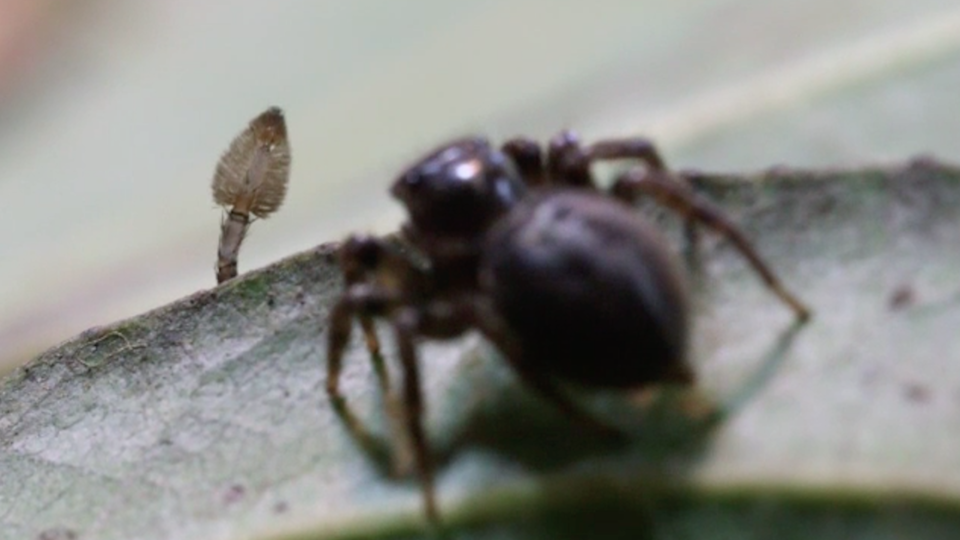Science News
New Discoveries: A Waving Spider, Roadkill Snake, and More!

New Discoveries is a collaboration between Stanford and Academy scientists and staff, appearing on the second and fourth Wednesdays of every month. Here we celebrate new species publications and demonstrate how much more there is to learn about life on Earth.
Yoo-hoo! Over here!
The male jumping spider Jotus remus may not be the most subtle of suitors. The newly described Australian arachnid has paddles on two of its legs to wave to female spiders. If the female has yet to mate, she’ll stop in her tracks and pay attention. If she’s recently mated, she’ll lunge at his legs. Easy come, easy go, I guess. (More information is here; a video of a waving male here.)
Squashed New Species
As we’ve mentioned before in these posts, you never know where you might discover a new species. Scientists found a new pit viper snake as roadkill on a Kyrgyz mountain road. Another proper (and un-flattened) specimen from the same area in central Asia confirmed it. Gloydius rickmersi is small for a pit viper. Researchers suspect that at 20 inches (50 centimeters), the snake can warm up quickly and survive cold temperatures in the higher altitudes. The scientific description of the new snake is here.
Rare Orchid
A new species of orchid, Encyclia inopinata, was described this month from the Mexican state of Oaxaca. Where and how do you hide something so lovely? In the deciduous forest, on slopes about 4,000 feet (1,200 meters) above sea level. And the flower only blooms March through July. The Mexican scientists were so surprised by this find that the species name comes from the Latin inopinatus: unexpected.
A Glass Sponge?
Several years ago, scientists sent a remote operated vehicle 2,600 feet (800 meters) down a bank at Queensland’s Osprey Reef. Six hours of footage revealed many interesting finds, including a new species of sponge, according to 9News. “They’re made of glass,” lead author Rob Beaman is quoted saying. “If you look at them through a microscope… [there’s] living flesh embedded with these little glass spicules.” The entire study is published in Marine Biodiversity.
Image: Jotus remus by Jürgen Otto